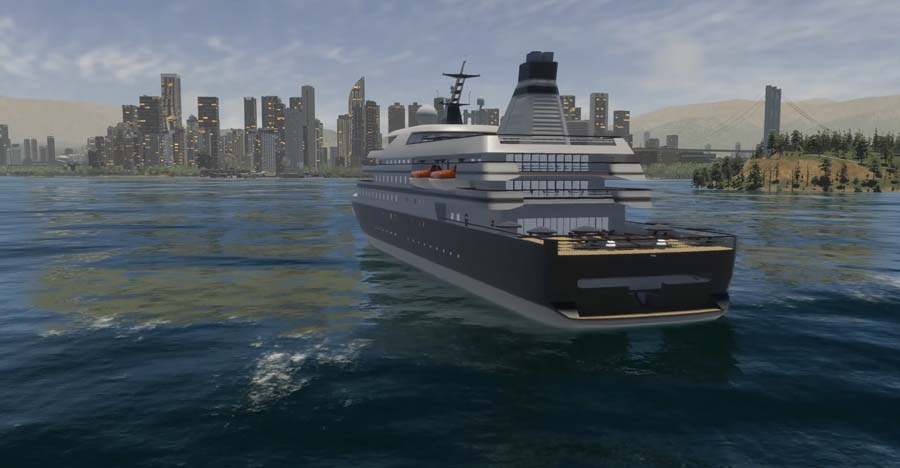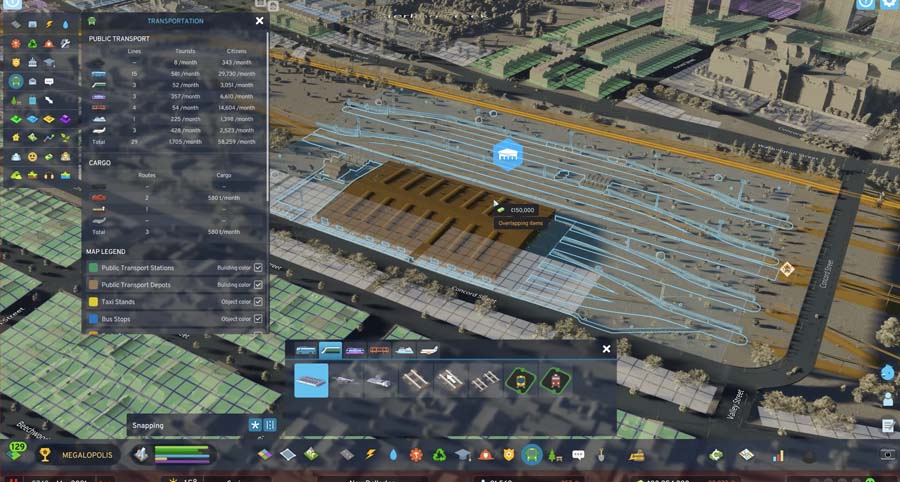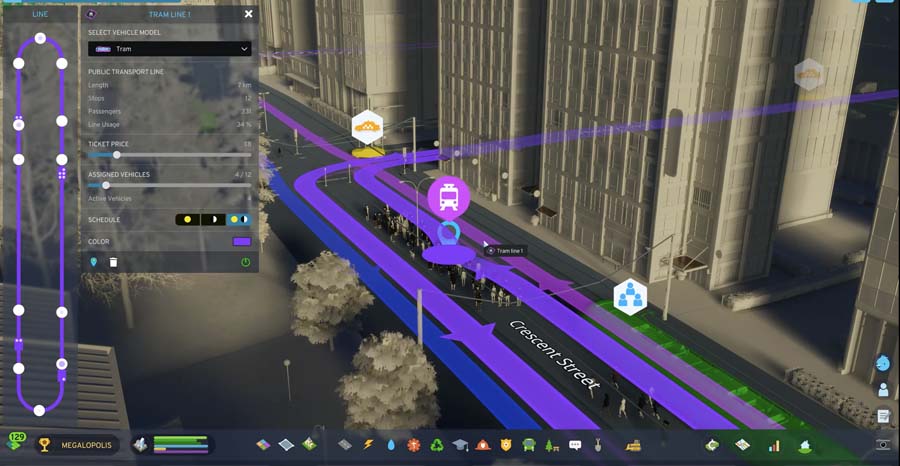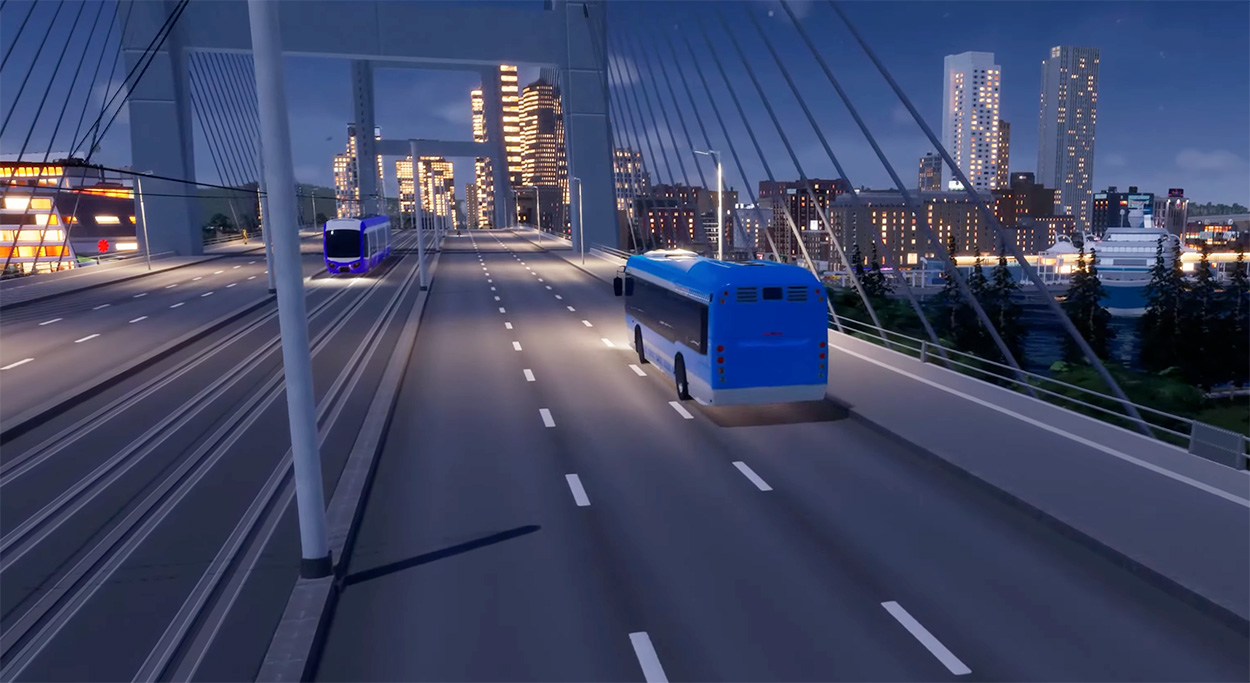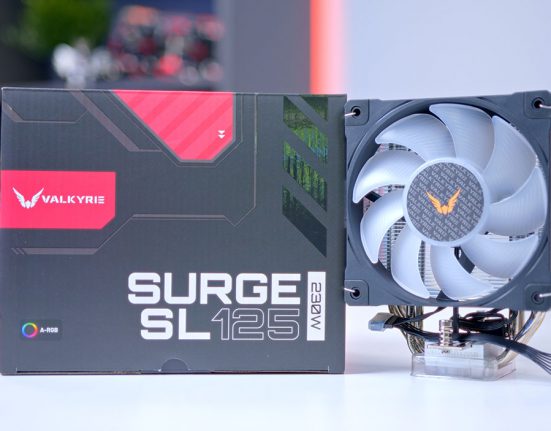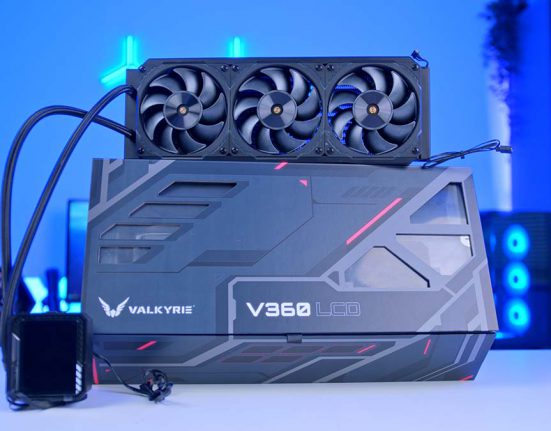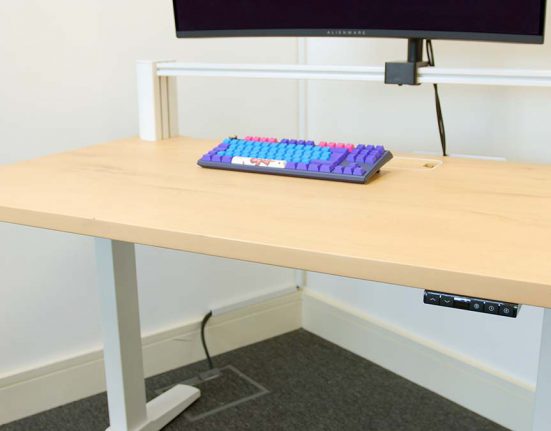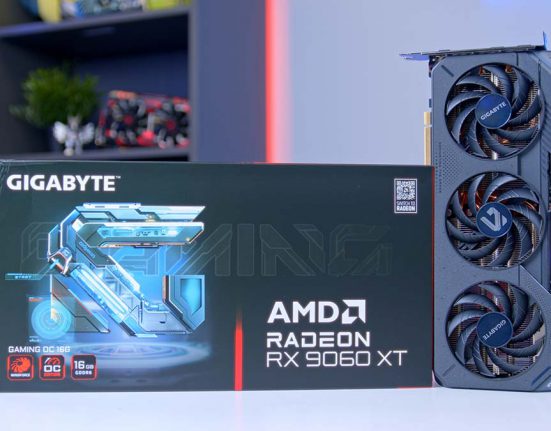The developers of Cities Skylines 2 have unveiled major updates to the public transport infrastructure in the most anticipated city builder game to launch in the last 10 years. The information was released during the developers latest instalment of a weekly YouTube series where new features and elements of the game are being slowly teased to excited players.
Public transport has always been a major part of city simulation games like Sim City (2013) and the original Cities Skylines. And it looks like the latest title from Paradox Interactive is to be no different.

Buses and taxis were the first methods of public transport touched upon in the showcase, and are the first methods of public transport players will unlock when building their cities. It seems taxis, (which were present in the first title) will become a more formalised form of transport this time around. That means information surrounding their usage and their visibility in the game will likely be elevated to allow players to optimise accordingly. Bus networks are touted as being the cheapest form of public transport to configure, as is the case in real cities, with a small bus depot seemingly unlocked from the very beginning in new city builds.
A new routing UI for buses, and all public transport, has also been revealed – this looks to be much cleaner and more readable this time around, encouraging players to take it into account when developing their city designs.

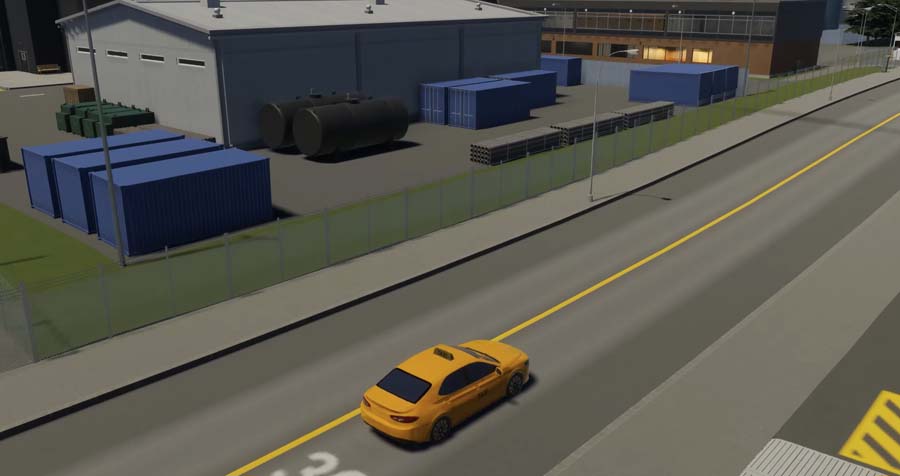
Trains, trams and subways come next for players as their cities grow, and there does seem to be some big updates here. Train tracks look to be more realistic than before, while different size and configurations of train stations are also apparent in the city building sequel. Trams can also be more easily laid in this follow up title, with the ability to easily upgrade existing roads – a welcome addition over the original game. I also get the impression that you’ll be able to upgrade a greater set of roads to become tram compatible, rather than needing to place tram specific road types in the first place for the connectivity to work.
Subways were perhaps the largest area of change though, with the tracks able to operate above ground this time around. This marks a strong change from CS1 where the transit type was largely invisible to players with a below ground only operation. It is unclear as of yet whether on ground tracks will be cheaper to build than tunnels, or whether trains and subways are able to share the same trackways.

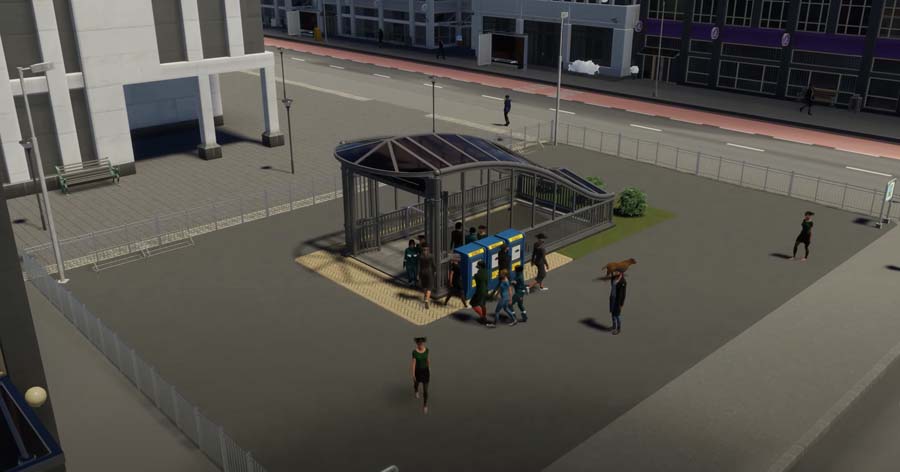
Subway tracks can also be placed above roads this time around, much like we witnessed with monorails in the original Cities Skylines. This allows for cities inspired by transit designs across lots of south east Asia, and a move away from the below ground only philosophy. Monorails were the only form of transit not mentioned in the trailer, though the type was offered as part of the ‘Mass Transit’ DLC in the original title.
A major area of emphasis in the trailer was on cargo, with a marked change over the original Cities Skylines title. Trains will now more realistically handle cargo, with train cargo hubs also acting as container storage. This perhaps indicates balancing storage for imports and exports may be a prominent element this time around, and that the dynamics of shipping containers could also come into play.
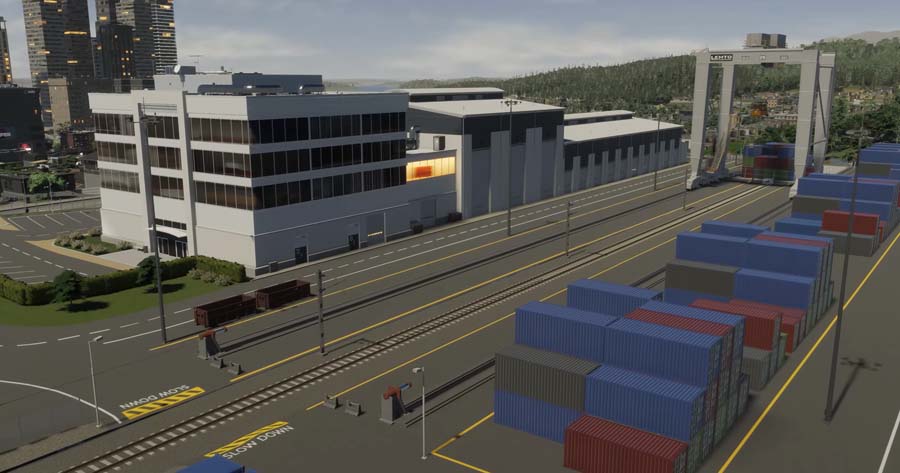
It was also pointed out that cargo ships, which make a return in CS2, have a far higher capacity than trains, and at a lower cost per container. This another indication of the increasingly complexity and realism being delivered in CS2, and the important of intelligent city design to a greater degree than ever before.
Finally, we also saw a glimpse of airports and air travel, with a larger footprint airport shown than we’ve seen in the stock game previously. There weren’t huge changes apparent here, but we’re sure there will be more modularity to airport design in CS2 and hope to see increased realism applied here too.
Overall, the changes seemed to go down well with the community of 10,000 people watching live. One viewer even said that they’d ‘buy the game twice!’, a clear nod to the successfulness of Paradox Interactive’s strong communication and PR strategy. If one thing is clear about Cities Skylines 2 it’s that the developers appear to have listened closely to players demands from last time around. This is one of the best pre-launch communication efforts I’ve seen from any game developer, and shows the attitude that successfully made CS1 the best city building game ever launched.
Personally, I can’t wait for this game to drop on Steam in October, and have my pre order firmly placed for its launch. Something to look forward when the Summer weather subsides? Absolutely, and I am here for it.
